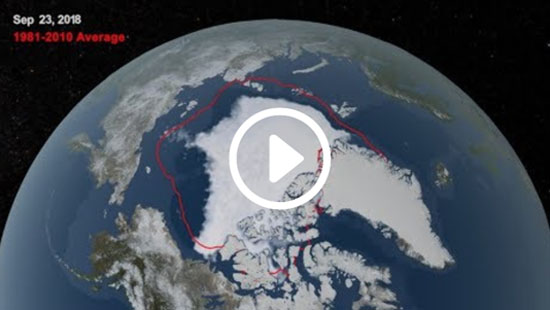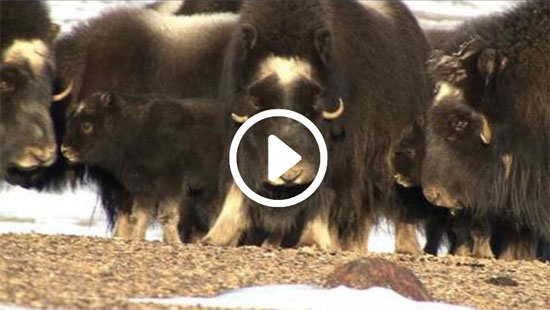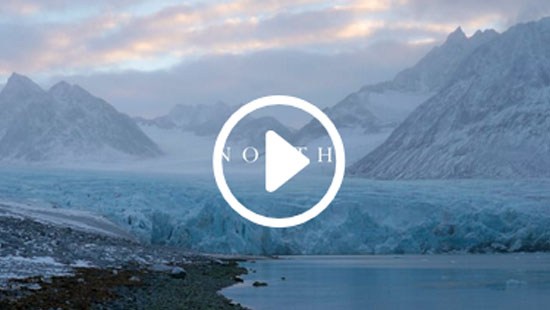Richard Byrd took three airplanes on his first Antarctic Expedition 1928-29. In March, 1929, he sent three men in the Fokker to the Rockefeller Mountains for geologic studies. A blizzard roared in, hurled the plane in the air, and slammed it down on the ice completely destroying it. The frame of the Fokker is visible today. Byrd’s grandson, Robert Byrd Breyer, is leading a team to recover the plane and return it to the States for display in a museum. Visit www.admiralbyrd.com for more information.
Category: Video
NASA Goddard time lapse of Arctic Ice Minimum 2018
2018 Arctic Sea Ice Ties for Sixth Lowest Minimum Extent on NASA Record.
National Geographic: They Turn Ice Into Ice Cubes | Continent 7: Antarctica
Sail the frozen waters of Antarctica on the U.S. Coast Guard Polar Star. This teams mission, break up ice sheets for Antarctica’s supply ships.
Drilling Ice Cores in Greenland
A group of scientists is drilling through Arctic ice to find out what’s happening in the middle of the ice field, and how that could affect all of us.
Nat Geo Megastructures: Building the New Amundsen Scott South Pole Station
Ousland & Ulrich Encounter with Polar Bears
Polar explorers Borge Ousland and Thomas Ulrich encounter a curious polar bear mother with her two cubs during their “In the Footsteps of Nansen” expedition.
Silent Snow – The Movie trailer
Trailer for a feature length film. Expected release: spring 2011. Film by Jan van den Berg and Pipaluk Knudsen-Ostermann. An Inuit search for solutions to the chemical poisoning of the world. View larger version at the Silent Snow trailer web site. More information at DRSFILM.TV
The Will Steger Foundation Videos
The Will Steger Foundation seeks to inspire and be a catalyst for international environmental leadership to stop global warming through exploration, education and action.
The featured movie is on Ellesmere Island, rife with wildlife; from white wolves, to muskox, to rabbits the size of Volkswagons. Fearless of humans, the animals stroll thru camp each evening.
View more videos here.
Imitiqutailq: Path of the Arctic Tern
The film chronicles a life-altering journey from one end of the Earth to the other, by two Inuit teens (Terry Noah and Jason Qaapiq) from Grise Fiord, Nunavut, Canada’s northernmost Arctic community, to the bottom of the world, Antarctica. The journey was the dream of the late Dr. Fritz Koerner (1932-2008), the irreverent and legendary glaciologist whom the people of Grise Fiord named “Imiqutailaq” (Arctic Tern), after the little seabird that flies from the Arctic to the Antarctic and back each year. The documentary touches on Fritz’s 50 years traveling pole to pole, studying the ice, and how he wanted these Inuit youth to better understand the impacts of climate change, and inspire everyone to do something about protecting the poles and the planet.
People of a Feather – Trailer
Featuring groundbreaking footage from seven winters in the Arctic, People of a Feather takes you through time into the world of Inuit on the Belcher Islands in Hudson Bay. Connecting past present and future is a unique cultural relationship with the eider duck.
For more information, please visit the film website and its associated Arctic Eider Society page.
North
Svalbard is an archipelago high within the Arctic Circle. In 1920, a treaty known as the Svalbard Act was signed by several nations recognising Norwegian sovereignty over the islands, and declaring the whole region a demilitarized zone. This is a short film about how Svalbard, over the course of recent history, became increasingly linked to developments in climate science. Much of the footage was shot whilst on residency above the Arctic Circle in 2010.
No Horizon Anymore
From summer to winter and back again, No Horizon Anymore takes you on a journey few have experienced. Fewer than 2,000 people have spent the austral winter at the South Pole Station. The film follows members of the 2009 winterover crew as they share their views on the interactions, the people, the environment, and the science that takes place during a busy year. After the sun sets, the crew succumbs to six months of inky darkness. Certain levels of ‘toastiness’ set in as routines are interrupted, and limits are tested. The only cure for claustrophobia is an unattainable outside world. With rare footage of the austral winter at 90-S, this film a must see for polar enthusiasts and adventurers alike.
Ends of Earth
Images from the Arctic and Antarctic by Anne Doubilet with original music by Garth Stevenson. Presented at American Polar Society 80th Anniversary Symposium held at Scripps Institute of Oceanography in La Jolla, CA, Nov. 3-6, 2015.












